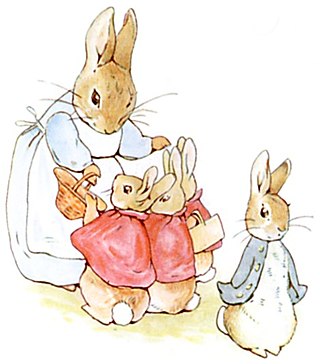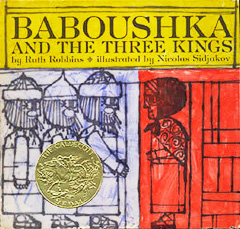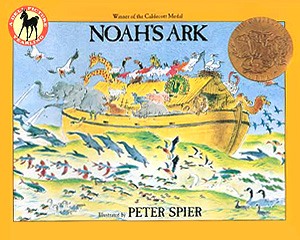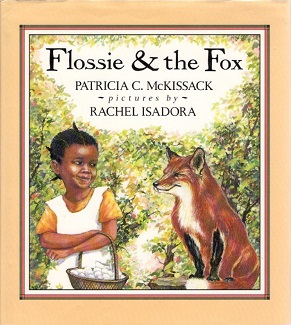
A picture book combines visual and verbal narratives in a book format, most often aimed at young children. With the narrative told primarily through text, they are distinct from comics, which do so primarily through sequential images. The images in picture books can be produced in a range of media, such as oil paints, acrylics, watercolor, and pencil. Picture books often serve as pedagogical resources, aiding with children's language development or understanding of the world.

"The Nun's Priest's Tale" is one of The Canterbury Tales by the Middle English poet Geoffrey Chaucer. Composed in the 1390s, it is a beast fable and mock epic based on an incident in the Reynard cycle. The story of Chanticleer and the Fox became further popularised in Britain through this means.
Leo Dillon and Diane Dillon were American illustrators of children's books and adult paperback book and magazine covers. One obituary of Leo called the work of the husband-and-wife team "a seamless amalgam of both their hands". In more than 50 years, they created more than 100 speculative fiction book and magazine covers together as well as much interior artwork. Essentially all of their work in that field was joint.
Trina Schart Hyman was an American illustrator of children's books. She illustrated over 150 books, including fairy tales and Arthurian legends. She won the 1985 Caldecott Medal for U.S. picture book illustration, recognizing Saint George and the Dragon, retold by Margaret Hodges.

Drummer Hoff is an illustrated children's book by Barbara and Ed Emberley. Ed Emberley won the 1968 Caldecott Medal for the book's illustrations. Written by Barbara Emberley, it tells a cumulative tale of seven soldiers who build a cannon named "Sultan", and Drummer Hoff, who fires it off, with the book exploding into a blast of colors. The last picture shows the exploded cannon at a future point in time among wildflowers and birds. The illustrations, done in woodcuts, evoke both 1960s psychedelica and Colonial American engravings.
Barbara Cooney was an American writer and illustrator of 110 children's books, published over sixty years. She received two Caldecott Medals for her work on Chanticleer and the Fox (1958) and Ox-Cart Man (1979), and a National Book Award for Miss Rumphius (1982). Her books have been translated into 10 languages.
Nonny Hogrogian is an Armenian-American writer and illustrator, known best for children's picture books. She has won two annual Caldecott Medals for U.S. children's book illustrations. Since childhood she prefers folk and fairy tales, poetry, fantasy and stories.

Ox-Cart Man is a 1979 children's book written by Donald Hall and illustrated by Barbara Cooney. It won the 1980 Caldecott Medal. The book tells of the life and work of an early 19th-century farming family in New Hampshire. The father uses an ox-cart to take their goods to market in Portsmouth, where they make the money to buy the things they need for the next year. Even the ox and cart are sold.

Virginia Haviland was an American librarian and writer who became an international authority in children's literature. She chaired the prestigious Newbery-Caldecott Award Committee, traveled and wrote extensively. Haviland is also well known for her Favorite Fairy Tales series, featuring stories from sixteen countries.

A Tree is Nice is a children's picture book written by Janice May Udry and illustrated by Marc Simont. It was published by Harper and Brothers in 1956, and won the Caldecott Medal in 1957. The book tells Udry's poetic opinion on why trees are nice:
"Trees are pretty. They fill up the sky. If you have a tree, you can climb up its trunk, roll in its leaves, or hang a swing from one of its limbs. Cows and babies can nap in the shade of a tree. Birds can make nests in the branches. A tree is good to have around. A tree is nice."

Time of Wonder is a 1957 children's book written and illustrated by Robert McCloskey that won the Caldecott Medal in 1958. The book tells the story of a family's summer on a Maine island overlooking Penobscot Bay, filled with bright images and simple alliteration. Rain, gulls, a foggy morning, the excitement of sailing, the quiet of the night, and the sudden terror of a hurricane are all expressed in this book. This was McCloskey's second Caldecott, the first being Make Way for Ducklings in 1942.

The Egg Tree is a 1950 book by Katherine Milhous that won the 1951 Caldecott Medal. It is based on the author's family tradition and tells the classic tale of a Pennsylvania Dutch Easter, with its main characters being Katy and Carl. One day, near Easter, they look for Easter eggs and found eggs that their grandmother had painted on a tree. They are interested, so they ask their grandmother about the eggs. They eventually create one, and it becomes a big success the next Easter.
Molly Garrett Bang is an American illustrator. For her illustration of children's books she has been a runner-up for the American Caldecott Medal three times and for the British Greenaway Medal once. Announced June 2015, her 1996 picture book Goose is the 2016 Phoenix Picture Book Award winner – that is, named by the Children's Literature Association the best English-language children's picture book that did not win a major award when it was published twenty years earlier.
Chanticleer and the Fox is a fable that dates from the Middle Ages. Though it can be compared to Aesop's fable of The Fox and the Crow, it is of more recent origin. The story became well known in Europe because of its connection with several popular literary works and was eventually recorded in collections of Aesop's Fables from the time of Heinrich Steinhowel and William Caxton onwards. It is numbered 562 in the Perry Index.

Baboushka and The Three Kings is a children's picture book written by Ruth Robbins, illustrated by Nicolas Sidjakov, and published by Parnassus Press in 1960. Sidjakov won the annual Caldecott Medal as illustrator of the year's "most distinguished American picture book for children".

Noah's Ark is a children's picture book written and illustrated by Peter Spier, first published by Doubleday in 1977. The text includes Spier's translation of "The Flood" by Jacobus Revius, a 17th-century poem telling the Bible story of Noah's Ark. According to Kirkus Reviews, the poem comprises sixty three-syllable lines such as "Pair by pair". "Without revising or even enlarging on the old story, Spier fills it in, delightfully." In a retrospective essay about the Caldecott Medal-winning books from 1976 to 1985, Barbara Bader described the book as "at once elaborate and feeble" and Revius' poem as "neither particularly suited to children nor eloquent in itself."

A Ball for Daisy is a 2011 children's wordless picture book written and illustrated by Chris Raschka. The book tells the story of a dog named Daisy, who has a beloved ball destroyed and then replaced. Raschka won the 2012 Caldecott Medal for his illustrations in the book. The creation of the book took years but was praised for its ability to evoke emotion in the reader. A sequel, Daisy Gets Lost, was released in 2013.
Anita Lobel is a Polish-American illustrator of children's books, including On Market Street, written by her husband Arnold Lobel and a Caldecott Honor Book for illustration, A New Coat for Anna, Alison's Zinnia, and This Quiet Lady. One Lighthouse, One Moon, one of three books she created about her cat, Nini, is a New York Times Best Illustrated Book. Her childhood memoir, No Pretty Pictures, was a finalist for the National Book Award.

Flossie & the Fox is a 1986 picture book by Patricia C. McKissack about a girl, Flossie, who takes some eggs to a neighbor, meets a fox on the way and manages to outwit it. In 1991, a film adaptation of the book was made with the author narrating.

Wolf in the Snow is a 2017 wordless picture book by Matthew Cordell. The book was favorably received by critics and won the 2018 Caldecott Award. The story has drawn comparisons to fairy tales like Little Red Riding Hood. The nearly wordless book tells the story of a girl and wolf who each get lost in the snowstorm. Cordell used distinctive illustration techniques for the girl and the wolf.













